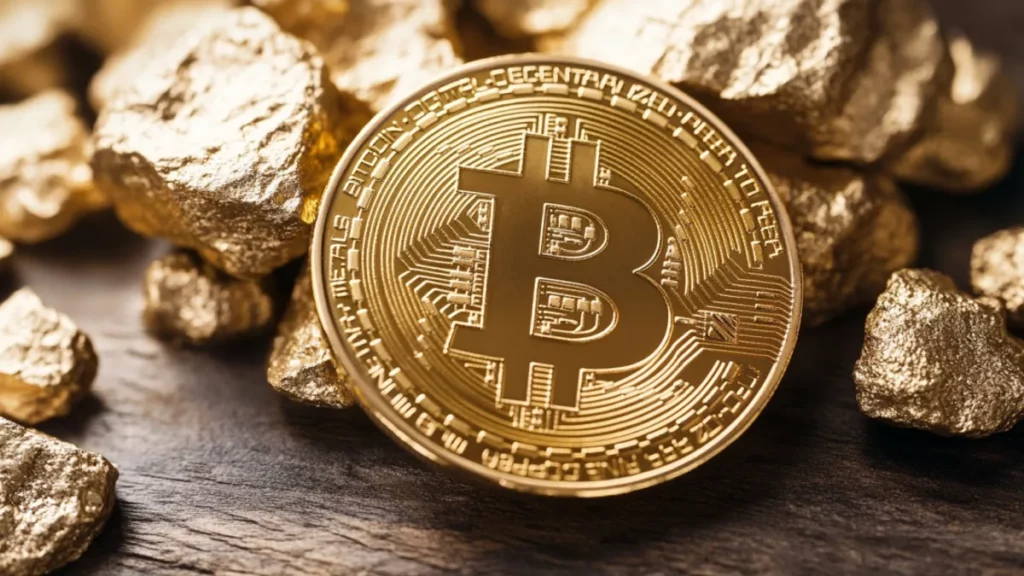
The price of gold has reached a historic high of $2,500 per ounce. Adjusted for inflation, this is still not close to the January 1980 gold price, but it is approaching that level.
Gold prices are rising because investors are preparing for lower U.S. interest rates, a weakening dollar, and a potential crash in tech stocks. So why hasn’t Bitcoin joined in on this rally?
Certainly, Bitcoin’s price is much higher than it was at the end of 2022. However, the steady rise in gold prices since 2000 is different from the sudden surge in Bitcoin prices.
The difference lies in the fact that if investors are worried about financial instability, they turn to gold. Bitcoin, on the other hand, is the ultimate risk asset, with characteristics of a tech asset.
Bitcoin Is Not a Hedge Against Depreciation
Bitcoin is not a hedge against depreciation, nor is it a hedge against a tech bubble.
Several top investors, such as Warren Buffett and George Soros, have recently announced that they have exited certain areas of the high-tech industry.
The hedge fund Elliott has warned that the AI boom is hype, especially in the case of Nvidia’s stock price. As they say, AI has entered bubble territory. The author largely agrees with this assessment.
The reason is that this revolution will not stop the long-term decline in productivity growth across the West. The U.S. has successfully reversed the trend of slowing productivity growth, but if you exclude the tech industry, the U.S. is not much different from Canada or Europe.
The productivity miracle in the tech industry is related to the stock market providing cheap capital to the sector. When this capital flow ends, the productivity gap between the U.S. and Europe is expected to narrow.
If productivity growth slows, what justification is there for keeping company profit growth high? Judging by current valuations, this is what they believe. In the long run, you would expect the two to align.
There are various ways to look at Gross Domestic Product (GDP). One way is to see it as the sum of all profits and all wages.
For most of this century, profit growth has outpaced GDP growth, and therefore wage growth, because political and demographic factors have favored corporate profits.
This situation is now changing. Until the last century, the price-to-earnings ratio of the S&P 500 fluctuated between just under 10 and 20. That was a period of relatively high productivity.
Currently, the price-to-earnings ratio is 26. The Nasdaq is at 40. It’s hard to imagine how these valuations can be sustained if long-term productivity growth declines.
High-Valuation Tech Stocks
The extremely high valuations of tech stocks and crypto assets are based on extremely optimistic assumptions about future earnings growth.
Cryptotechnology brings hope for financial innovation, but it may take another decade or two to become relevant to the macroeconomy.
Artificial intelligence will undoubtedly impact people’s lives. But both the utopian visions and the dystopian stories about AI are overblown.
ChatGPT is useful for technical tasks, especially programming, but it doesn’t seem to help much with journalism.
Remember in 2017 when everyone predicted we would have self-driving cars by now? We are still many years away from that utopia.
If we’re lucky, we might see cars driving autonomously on highways within 10 years.
Bitcoin Boom?
So what will happen to Bitcoin if the market crashes? Certainly, Bitcoin is as inflation-resistant as gold, if not more so.
Gold carries supply risks. Central banks might flood the market with gold reserves. Or new gold discoveries might be made. But no new Bitcoins will ever be found, and there is no possibility of a supply shock.
Unfortunately, this doesn’t solve the problem. Currently, Bitcoin’s fate is intertwined with that of the tech industry. Many investors see cryptocurrencies as part of their tech portfolio.
Crypto assets, especially Bitcoin, have acquired traditional investment characteristics over the years through exchanges, stablecoins, and spot ETFs.
Gold sits at the other end of the investment spectrum—a safe, boring part.
People generally don’t invest in gold to make big money. Gold investors behave more like a cult. The author has always wondered why so many older male gold enthusiasts wear bow ties. It’s an odd group of people.
There are plenty of oddballs in the cryptocurrency world too, but it’s fundamentally different from gold.
This also applies to how the two react to a bubble burst. In that case, liquidity will drain from the system. Traders will rush to meet margin calls.
The financial world is not as fragile as it was in 2008. But the author believes that the kind of tech stock crash that is expected could become a source of financial instability.
Therefore, if the market crashes, Bitcoin is also expected to crash. But Bitcoin and other crypto assets will eventually recover, and some (but not all) of the currently soaring tech stocks will recover too.
The reason the author remains optimistic in the long term is that crypto assets share an important characteristic with gold: scarcity makes them a safe long-term investment.
Even if most investors don’t see Bitcoin this way now, that’s indeed the case.
A few years ago, the author did not accept the idea that scarcity has intrinsic value, believing it needed to be tied to something else, like industrial use, aesthetic value, or in the case of gold, a time-tested consensus that it inherently holds value.
Today, the author has changed their mind on this point. In a world where central banks recklessly expand their balance sheets and governments turn their currencies into geopolitical weapons, guaranteeing scarcity itself has value.
But that’s in the long term. If the bubble bursts in the next year or two, expect Bitcoin to fall with it. Gold, however, will not.